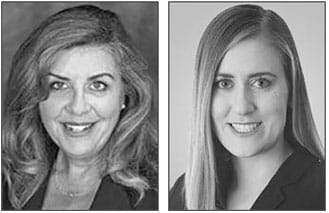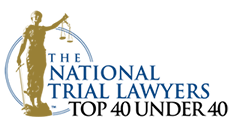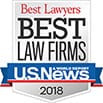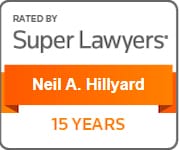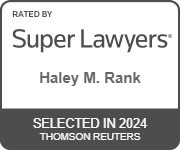Featuring Kylie Osterloh
What types of technology do you use in the courtroom, if any? What do you find most beneficial about that technology?
CLOR:
I have been in practice for almost 25 years and techno- logy has obviously changed a lot. I like to use a mix of technology in the courtroom. What is used depends on the type of case, the size of the case (to justify cost), and the number of documents and/or exhibits. For larger cases, I like to use one of the trial presentation programs like Trial Director. This program allows for easy access and display of medical records and other documents to the jury, witnesses and court and the ability of the attorney or witness to highlight sections.
For opening and closing, I will put together a power point presentation, which mainly serves as an outline and/or notes. It allows me to do away with written notes and is a cost- effective tool that is easy to alter and change as needed. I like a digital presentation for opening and closing to carry themes through the trial. I have found it very helpful to have my medical experts (and any other type of expert providing complicated testimony) put together presentations to help them explain their testimony to the jury. I like to use video presentation, including excerpts from video depositions and 3D animation.
I also like the old-fashioned technology of having enlargements and boards, if that makes more sense for the type of material being presented. In addition, with experts, I like them to create an exhibit during their testimony, so I have them draw a diagram or mark on blowups of anatomical drawings.
OSTERLOH:
1. Trial Presentation Software: I’ve found Trial Director to be the leading full-feature software when compared to competitors. Although the user interface isn’t par- ticularly intuitive, it supports a broad range of file types and provides the most options for document manipulation and markup while in presentation mode.
2. High Definition TV: Although projectors and screens remain prevalent in the courtroom, a TV has several benefits. For example, your picture remains clear with bright overhead light, and witnesses can step down and gesture in front of the screen without interfering with the display.
3. Laptop: A laptop is a must for general day-to-day trial needs. I send emails about witness scheduling
4. iPad Pro: I’ve come to heavily rely on my iPad on a daily basis in trial. It can connect to the court reporter’s real time transcript, and I can scroll through the testimony. It can also serve as a secondary monitor to assist with preparing a trial brief on an unanticipated issue that arises in the courtroom. It can remotely access forgotten documents at office.
5. Elmo Document Camera: No matter how prepared you are for trial in preloading your exhibits digitally, there will typically be an exhibit or two that you will want to throw up onto the screen on the fly.
6. External Flash Drive: This contains a backup of every- thing loaded into the trial presentation software in the event of a crash. I also copy the entire case file from the office the night before trial so I always have access to any of the documents.
Do you think that use of technology in the courtroom is essential to the presentation of evidence or a distraction? Why?
CLOR:
I absolutely think that the use of technology in the court- room is essential to the presentation of evidence. I think jurors expect the use of technology in the courtroom as that is how they receive information daily, so that is what they understand. I think this is especially true for our younger jurors. However, I think that a mix of technology is important and that, if you can present information in more than one format, it may be more helpful to some jurors.
Technology, however, must be tested in advance in the specific courtroom you are in to make sure it works in that courtroom. Technology that does not work correctly is a distraction. Having had this happen to me during a trial, I’ve learned that it is important to always have a contingency plan in place in case something happens.
OSTERLOH:
In modern society, technology in the courtroom is essential to trial. Most jurors expect digital exhibits, graphics, and videos to help them understand the case. That said, there is often no substitute for tangible objects in the courtroom. For example, stacking up medical texts that contain statements contrary to the defense expert’s testimony is more effective that pulling up the statements digitally.
How/when do you typically use technology (i.e. allow witnesses to create demonstratives, highlighting documents, blowing up documents, timelines, etc.)?
CLOR:
I mainly use technology in my case in chief – opening, closing, and direct examination of witnesses. I think it is important to especially have expert witnesses create demonstratives during their testimony, which then you mark and enter into evidence as an exhibit and to use highlighting and blow ups of particular important parts of documents and/or records. As I stated above, I also work with my experts to create Power Point presentations for their testimony – I think having an expert do something to show the jury their opinions is just as important as having them tell their opinions.
I also think every plaintiff’s case needs a timeline – whether it is a pre-made timeline or one that is constructed through witness testimony. The technology that I have used for a timeline is typically a large board that can also be digitally displayed.
OSTERLOH:
Typically, I am magnifying and highlighting portions of documents so jurors can actually read the pertinent parts of the tiny text. This is mixed in with the use of graphics or animations to help explain difficult concepts. As a second chair, I’m constantly pulling key testimony, coordinating with the office, and briefing on my computer throughout the trial.
Do you have any advice for other lawyers (particularly small/solo firms) as to how to manage the expense of technology in the courtroom, either in regard to specific types of software or alternative ways of presenting evidence?
CLOR:
I know I sound like a broken record, but use Power Point. It is easy and cheap. If the records in the case are not voluminous, Power Point can be used to manage those records too. As far as experts go, I often ask treating physicians or my retained experts how they would explain this condition and/or problem to a patient or student and what they use for such explanations – I have had doctors tell me that they have a tool such as video, diagrams, pamphlets, and models, and then I incorporate those tools to explain their opinions to the jury.
OSTERLOH:
Take advantage of the “wired” courtrooms like those in Jefferson County and federal court. You should be able to present evidence by simply purchasing a trial presentation software and then plugging your computer into the system. Alternatively, if defense counsel is hiring an outside tech person, you can ask if they would allow you to plug into their setup, without charge, as long as you are pulling up your own exhibits. I found the TrialPad application ($130) to be an incredible trial presentation tool. It’s not as robust as a full-blown trial presentation software, but I would certainly feel confident using it at a trial set for 5 days or less.
Have you had any unfortunate experiences with technology that can serve as a lesson to other lawyers?
CLOR:
Yes, I had a case in Colorado U.S. District Court, whereby we had made arrangements for one of our experts to give re- buttal testimony via video link because this expert was at a conference and could not come back to Denver. The company we were using to present and manage our exhibits had worked with the IT people at the Court to get the appropriate tele- phone numbers and links. Problem was, it was not tested ahead of time, and when it came time for the testimony, the Court’s firewall would not allow through the video feed from the equipment being used on the other end. So, we had to go to plan B, which was telephone testimony only.
OSTERLOH:
I had the opportunity to run the trial presentation software for numerous trials while I was still in law school. One day, during a particularly heated cross examination, the entire trial presentation software crashed and wiped all the exhibits and deposition videos I had loaded. Fortunately, because I always keep an external hard drive with a full backup, I was able to get everything back up and running minutes after rebooting the computer.
What is the closest thing to real magic?
CLOR:
I know this is cliché, but I would say the closest thing to real magic is the birth of your child and the overwhelming love and sense of responsibility that comes with that birth.
OSTERLOH:
Dry shampoo at the end of a multi-week trial.
Is Colorado better in the summer or winter? Why?
CLOR:
I love the Colorado winter. We have the best winter weather with bright blue skies and cool temperatures. Colorado winter also means skiing – and there is no better place to ski.
OSTERLOH:
Definitely the winter. There’s nothing like skiing down the slopes after a dump of fresh powder.
What is something new you learned in the last week?
CLOR:
How to work the streaming option on our television to watch a show at any time you want.
OSTERLOH:
The moment you believe a case is finally on the verge of resolution is the perfect time to keep your foot on the gas.
Looking back, what has been the biggest change you have seen in the legal profession?
CLOR:
I think that the biggest change has been with the advent of email. Lawyers do not talk to each other as much, and our conferrals are now done via email – which does not allow you to get to know the opposing attorney. I also think with communication being mostly via email, people are not as nice as they are in person, or on the telephone, so the practice at times has gotten more adversarial.
Looking forward, what do you hope to see change in the legal profession?
OSTERLOH:
I would like to see the plaintiff’s bar, as a whole, focus more on electronically stored information in discovery. I think there remains a world of data and information relevant to our cases that remains unknown.
